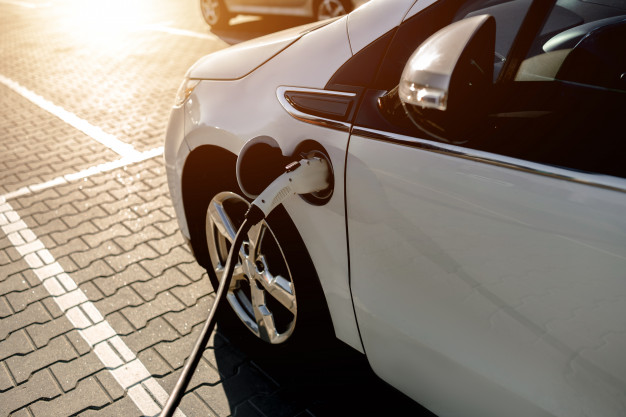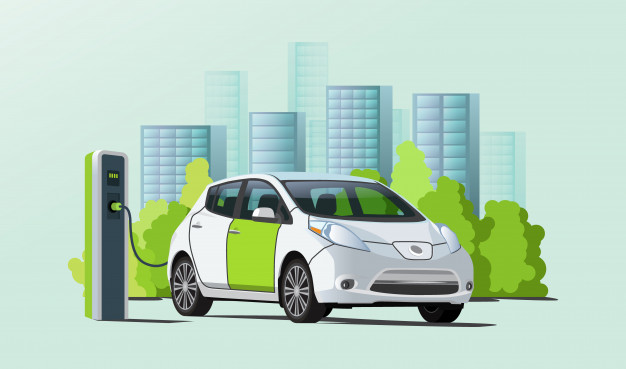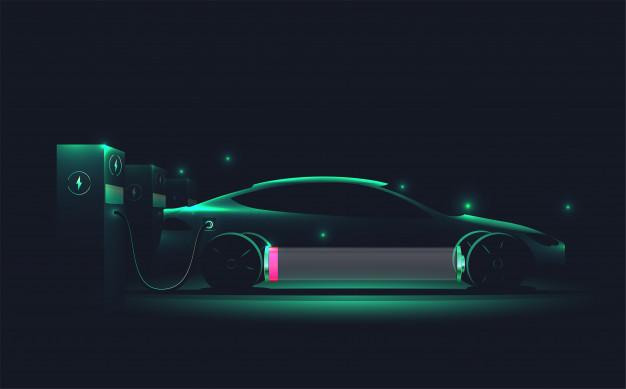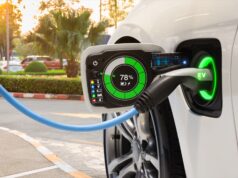For most of their existence, electric vehicles have occupied a niche market of tech-savvy consumers. Early attempts at electric cars can be seen as far back as the 1830s, with a Scottish inventor’s battery-operated “motorized carriage.” Also in Scotland in the 1830s, another inventor built the prototype of an electric locomotive.
Rechargeable batteries didn’t come around until nearly 1860, and more attempts were made throughout the latter half of that century. Cut to the late 1900s, when General Motors made the “EV1,” a complete redesign (and reimagining) of what a car could look like. The EV1 had a range of 80 miles and could hit 50 mph in seven seconds, which gave it a cult following. But high production costs caused the project to be shelved in 2001.
Toyota launched its Prius, a hybrid electric vehicle, in Japan during the late 1990s. Due to the car’s popularity, the company released the Prius worldwide a few years later. Regardless of its popularity, one could still argue that hybrid EVs occupied a niche in the overall automobile market. When “smart cars” came along, their comic appearance only furthered the marginalization of EVs in the view of mainstream consumers.
Tesla Motors, an early-aughts Silicon Valley tech startup, began working on a cool, sporty, luxury EV that would help change public perception of electric vehicles. In 2010, the EV options for consumers expanded with both the Nissan LEAF and Chevy’s Volt. The Volt was a plug-in hybrid, meaning that once the car’s battery is depleted, a gasoline engine takes over.
Other car manufacturers joined in as the EV market gained traffic, but then Covid came along. However, the pandemic’s impact was largely determined by the mandates and restrictions depending on the region you are in. Some manufacturers got incentives from the governments while others, like the United States, never received any; thus, some will recover quickly. To successfully emerge as the best in this area, one has to overcome a series of challenges that lie ahead of them, including the regulatory environment, customers, electric vehicle infrastructure, electric vehicles business case, and profitability. To ensure that you succeed in the market today, here are ways to design your electric vehicles.
Reinvent Brand Positioning

Original equipment manufacturers (OEMs) have to position their products based on different purposes to serve in the market. However, this should not differ from the overall brand but only specific to the electronic vehicles. In addition to differentiated marketing, they also need to offer attractive offerings and incentives to attract more customers into their markets. Communication must be clear between the manufacturers and their prospects and target market.
The Charging Ecosystem

As an OEM, you must provide a charging experience that will make the customers feel secure when purchasing your product. You have to make the charging system accessible as quickly as possible and with relative charges that will not send away the consumers. The OEMs must permit home charging by developing a co-branded wall box with electronic vehicles. To boost your sales further, you need to establish an international partnership to create a public charging solution for all your customers with quick and efficient chargers. However, you also need to develop a smart charging solution that will base charging recommendations on the level of energy available.
Generate Income from the Life Cycle
As an OEM, you need to pursue all the long-term revenue opportunities that come with your electronic vehicle throughout its lifecycle. This will help you to boost your profit margins on the services that you offer. However, you must raise revenue from the customer’s data and the electronic vehicle’s data. They may help address issues involving electric vehicles or offering marketing services using a third party.
Reskilling and Refocusing the Sales Force

You have to ensure that your sales force has ample information regarding the electric vehicles’ potential benefits to help them deal with objections that might come along as they sell them. Your dealers must also help you in the provision of enticements that will make your sales economically attractive. You should also closely monitor the third-party dealers’ performance to ensure that they mark their sales progress. Moreover, you need to invest digitally by acquiring tech-savvy products to give information to your customers. However, it would be best to make your dealers reach more prospects by visiting automobile companies and taxi companies.
Improving After-Sales Customer-Centricity and Readiness
You have to develop a training program (for electric vehicles) specifically in battery diagnosis and train the technicians in their dealer networks. This comes hand in hand with ensuring that EV related parts are readily available. This will necessitate having an electric vehicle service offering and maintenance plan that will bring more income to your organization. You must also provide after-sales services that are of high quality and are more satisfying to the customer.
Transforming the Business Model to Achieve Stability at Scale

Every business aims to make a profit. Therefore, you have to modify your business model to fit the one that will make you achieve more profits. Regardless of the high costs of production, you still stand a chance to achieve gains at scale.
Building a Native Platform
So far, it seems like manufacturers who use a native EV platform end up with cars that drive further and have more interior space than cars based on the classic internal combustion engine model. It makes sense, after all; instead of trying to adapt a gas-driven system into an EV or hybrid, creating the base model from scratch results in an overall better product.
Electric Vehicle Accessories Industry

There is also a growing accessories industry surrounding electric vehicles. Third-party chargers, such as the ones available from EVgo.com, need to be designed for both commercial and home use in order for EVs to meet critical mass. With home chargers come other lines of accessories, from security locking brackets to carrying cases. Even the tires made for EVs differ from tires for other vehicles. As time goes on and more consumers buy electric vehicles, we can expect to see an even wider marketplace for these types of items.








